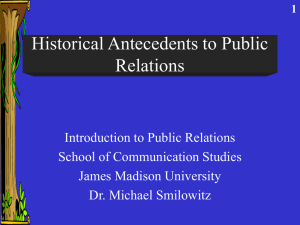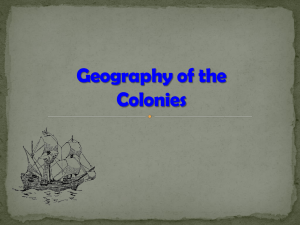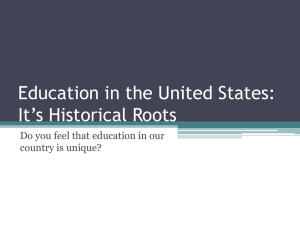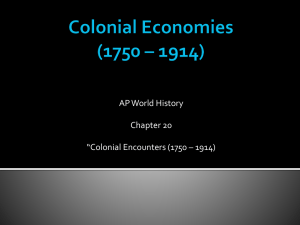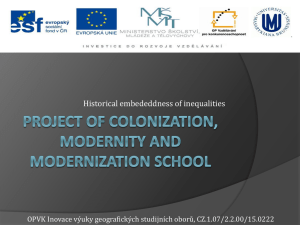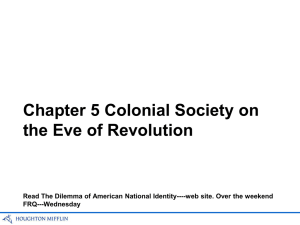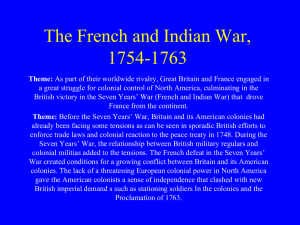Colonial Encounters Study Guide: 1750-1914
advertisement
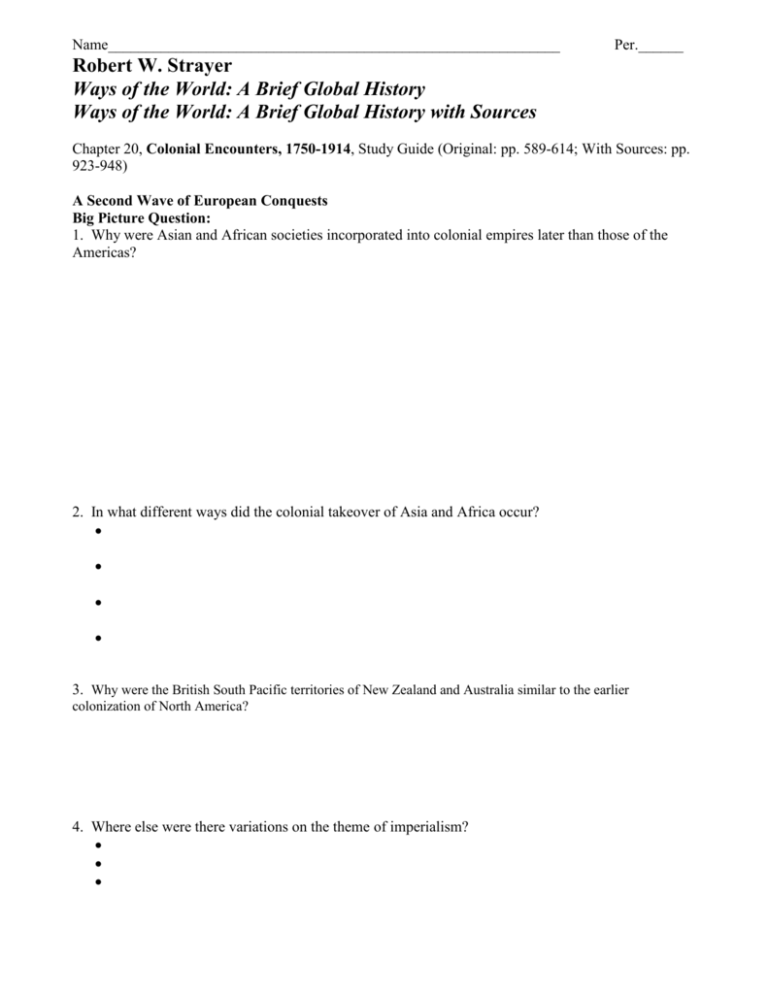
Name____________________________________________________________ Per.______ Robert W. Strayer Ways of the World: A Brief Global History Ways of the World: A Brief Global History with Sources Chapter 20, Colonial Encounters, 1750-1914, Study Guide (Original: pp. 589-614; With Sources: pp. 923-948) A Second Wave of European Conquests Big Picture Question: 1. Why were Asian and African societies incorporated into colonial empires later than those of the Americas? 2. In what different ways did the colonial takeover of Asia and Africa occur? 3. Why were the British South Pacific territories of New Zealand and Australia similar to the earlier colonization of North America? 4. Where else were there variations on the theme of imperialism? Under European Rule 5. How were such small numbers of Europeans able to communicate and govern such huge and populous territories? 6. What triggered the Indian Rebellion (1857-1858) and what was the consequence of it? 7. What was distinctive about European colonial empires of the 19th century? 8. Explain the brutal regime of forced labor in the Congo. Ways of Working: Comparing Colonial Economies 9. What was a consequence of the forced cultivation of cash crops in German East Africa and Mozambique? 10. What did a shortage of labor foster? 11. What kinds of wage labor were available in the colonies for the colonial subjects? 12. What could unskilled, African mine laborers expect, since they worked at a fraction of white wages? 13. How were the lives of African women altered by colonial economies? (Before/After) 14. Explain the overall economic impact of colonial rule on Asian and African societies. Believing and Belonging: Identity and Cultural Change in the Colonial Era 15. What impact did western education have on colonial societies? 16. What were the attractions of Christianity within some colonial societies? 17. How and why did Hinduism emerge as a distinct religious tradition during the colonial era in India? 18. In what way were “race” and “tribe” new identities in colonial Africa? Explain the significance of each of the following: “Scramble for Africa” — Apartheid— Subsistence farming— Swami Vivekananda— Chapter 20 Study Guide Answer Key 1. Why were Asian and African societies incorporated into colonial empires later than those of the Americas? This second wave of European colonial conquests, at least by the mid-nineteenth century, was conditioned by Europe’s Industrial Revolution. Additionally, there was a lack of a disease advantage over indigenous populations in non-tropical regions. European motives and activities were shaped by the military capacity and economic power that the Industrial Revolution conveyed. In general, Europeans preferred informal control, for it was cheaper and less likely to provoke wars. (Europeans were busy looking for raw materials and markets to help drive the industrial revolution. Spain and Portugal now had minor roles in conquest as Germany, Italy, Belgium, the United States, and Japan were pushing for more territories to control). (Original: p. 590; With Sources: p. 924) 2. In what different ways did the colonial takeover of Asia and Africa occur? through threats or military force Particularly in India, the British East India Company, rather than the British government directly, played the leading role in the colonial takeover of South Asia. The British in South Asia and the Dutch in Indonesia were able to assert themselves in part because the regions were politically fragmented. In Africa, the colonial takeover coincided with intense competition between European powers (Scramble for Africa) to establish colonial holdings, followed by slower efforts to enforce their claims. (Original: pp. 590-592; With Sources: pp. 924-926) 3. Why were the British South Pacific territories of New Zealand and Australia similar to the earlier colonization of North America? In both places, conquest was accompanied by massive European settlement and diseases that reduced native population numbers by 75% or more by 1900. (Original: p. 592; With Sources: p. 926) 4. Where else were there variations on the theme of imperialism? Japan took over Taiwan and Korea the westward expansion of the United States; following the Spanish-American War, the U.S. took over the Philippines the Russian penetration of Central Asia (Original: p. 594; With Sources: p. 928) 5. How were such small numbers of Europeans able to communicate and govern such huge and populous territories? The shortage and expense of European administrators and the difficulties of communicating across cultural boundaries made it necessary for colonial rulers to rely heavily on a range of local intermediaries. Thus, Indian princes, Muslim emirs, and African chiefs, often from elite or ruling families, found it possible to retain much of their earlier status and privileges while gaining considerable wealth by exercising authority, both legally and otherwise, at the local level. (Original: p. 595; With Sources: p. 929) 6. What triggered the Indian Rebellion (1857-1858) and what was the consequence of it? It was triggered by the introduction into the colony’s military forces of a new cartridge smeared with animal fat from cows and pigs. The cow was sacred to Hindus and the pig was offensive to Muslims and both groups viewed this as a plot to defile them and convert them to Christianity. Behind this incident were even more grievances from many groups of people. The British crushed the rebellion and widened the racial divide in colonial India. This convinced the British government to assume direct control over India, ending the era of British East India Company rule in the subcontinent. (Original: p. 596; With Sources: p. 930) 7. What was distinctive about European colonial empires of the 19th century? the prominence of race in distinguishing between rulers and ruled the extent to which colonial states were able to penetrate the societies they governed They had a penchant for counting and classifying their subject peoples. Their policies for administrating their colonies contradicted their core values and their practices at home to an unusual degree. (Original: pp. 596-598; With Sources: pp. 930-932) 8. Explain the brutal regime of forced labor in the Congo. Boys’ hands were severed in punishment for their villages’ inability to supply the required amount of wild rubber. Some villagers were shot or had their ears cut off. (Original: pp. 599-600; With Sources: p. 933) 9. What was a consequence of the forced cultivation of cash crops in German East Africa and Mozambique? In German East Arica, the imposed cultivation of cotton seriously interfered with production of local food crops. This prompted a massive rebellion in 1905 and persuaded the Germans to end the forced growing of cotton. In Mozambique, where the Portuguese likewise brutally enforced cotton cultivation, a combination of peasant sabotage, the planting of unauthorized crops, and the smuggling of cotton across the border to more profitable markets ensured that Portugal never achieved its goal of becoming self-sufficient in cotton production. (Original: p. 600; With Sources: p. 934) 10. What did a shortage of labor foster? It fostered the employment of former slaves as dependent and exploited workers and also generated tensions between the sexes when some men married women for their labor power but refused to support them adequately. Moreover, the labor shortage brought a huge influx of migrants from the drier parts of West Africa, generating ethnic and class tensions. Furthermore, many colonies came to specialize in one or two cash crops, creating an unhealthy dependence when world market prices dropped. (Original: p. 601; With Sources: p. 935) 11. What kinds of wage labor were available in the colonies for the colonial subjects? The kinds of wage labor available were mine work, construction projects, or household servants. (Original: pp. 601-602; With Sources: pp. 935-936) 12. What could unskilled, African mine laborers expect, since they worked at a fraction of white wages? The laborers were recruited on short-term contracts, lived in all-male prisonlike barracks that were often surrounded by barbed wire, and were forced to return home periodically to prevent them from establishing a permanent family life near the mines. (Original: p. 603; With Sources: p. 937) 13. How were the lives of African women altered by colonial economies? (Before/After) Before colonization, African women were active farmers, with responsibility for planting, weeding, and harvesting, in addition to food preparation and child care. Women were expected to feed their families and often were given their own fields for that purpose. Many women were involved with trade activity. While subordinate to men, African women had a measure of economic autonomy. Following colonization, women’s lives diverged more from those of men. Women dominated subsistence production, while men took a dominant role in cash-crop agriculture. Women managed domestic economy as the men migrated to cities. Women were forced to take on traditionally male tasks in addition to their normal responsibilities. Women sought closer relations with their birth families, introduced laborsaving crops, adopted new farm implements, and earned some money as traders. In the cities, they established a variety of self-help associations. Women of impoverished rural families often became virtually independent heads of households in the absence of their husbands, while others took advantage of new opportunities in mission schools, towns, and mines to flee restrictions of rural patriarchy. (Original: pp. 604-605; With Sources: pp. pp. 938-939) 14. Explain the overall economic impact of colonial rule on Asian and African societies. Colonial rule served, for better or worse, to further the integration of Asian and African economies into a global network of exchange centered in Europe. Europeans conveyed to the colonies some elements of their own modernizing process, including modern administrative and bureaucratic structures, communication and transportation infrastructures, schools, and modest provisions for health care. Nowhere in the colonial world did a breakthrough to modern industrial society of Japanese dimensions occur. (Original: pp. 605-606; With Sources: ) 15. What impact did western education have on colonial societies? For the minority, the acquisition of a Western education generated a new identity, providing access to better-paying jobs, and escape form the obligations of living under European control, such as forced labor. It brought them elite status within their own communities and an opportunity to achieve or approach equality with whites in racially defined societies. Education created a cultural divide within Asian and African societies between the small number who mastered to varying degrees the ways of their rulers and the vast majority who had not. In India, Western educated people organized a variety of reform societies, which sought a renewed Indian culture that was free of child marriages, caste, etc. However, there was disillusionment among those who received a Western education, as well. Europeans generally declined to treat Asian and African subjects as equal partners, regardless of their education. (Original: pp. 607-609; With Sources: pp. 941-943) 16. What were the attractions of Christianity within some colonial societies? Military defeat shook confidence in the old gods and local practices, fostering openness to new sources of supernatural power that could operate in the wider world now impinging on their societies. Furthermore, Christianity was widely associated with modern education, and especially in Africa, mission schools were the primary providers of Western education. The young, the poor, and many women—all oppressed—found new opportunities and greater freedom in some association with missions. The spread of the Christian message was due to the many thousands of African teachers, catechists, and pastors, rather than European missionaries, who brought the new faith to remote villages and communities that begged for a teacher and supplied the labor and materials to build a small church or school. (Original: pp. 609-610; With Sources: pp. 943-944) 17. How and why did Hinduism emerge as a distinct religious tradition during the colonial era in India? In India, leading intellectuals and reformers began to define their region’s endlessly varied beliefs, practices, sects, rituals, and schools of philosophy as a more distinct, unified, and separate religion that we now know as Hinduism. It was in part an effort to provide for India a religion wholly equivalent to Christianity. Hinduism provided a cultural foundation for emerging ideas of India as a nation, but it also contributed to a clearer sense of Muslims as a distinct community in India. (Original: p. 610; With Sources: p. 944) 18. In what way were “race” and “tribe” new identities in colonial Africa? Before the colonial period, African peoples had long recognized differences among themselves based on language, kinship, clan, village, or state, but these were seldom clearly defined. The idea of an Africa sharply divided into separate and distinct “tribes” was in fact a European notion that facilitated colonial administration and reflected Europeans’ belief in African primitiveness. New ethnic identities were not simply imposed by Europeans; Africans found ethnic or tribal labels useful. This was especially true in rapidly growing urban areas where competition for jobs, housing, and education was very intense. Migrants to the city found it helpful to categorize themselves and others in larger ethnic terms. Thus, in many colonial cities, people who spoke similar languages, shared a common culture, or came from the same general part of the country began to think of themselves as a single people—a new tribe. (Original: pp. 611612; With Sources: pp. 945-946) Explain the significance of each of the following: “Scramble for Africa” —In the second half of the nineteenth century, European powers were pitted against one another as they hurried to partition the entire continent of Africa among themselves. Negotiations were peaceful among the competing powers but there was extensive and bloody military action to make their control effective on the ground. (Original: p. 592; With Sources: p. 926) Apartheid— South African whites limited African social and political integration in every possible way. The racial fears that were aroused resulted in extraordinary efforts to establish race as a legal, not just a customary, feature of South African society. This racial system provided for separate homelands, educational systems, residential areas, public facilities, and much more. (Original: p. 597; With Sources: p. 931) Subsistence farming—farming in which peasant families produced crops largely for their own needs and not for cash crops. (Original: p. 598; With Sources: p. 932) Swami Vivekananda—(1863-1902) He was one of 19th C. India’s most influential religious figures who helped to revive Hinduism, without its distortions, and brought Hinduism to the attention of small groups in Europe and the United States. (Original: p. 610; With Sources: p. 944) Name_____________________________________________________________ Per.________ Strayer, Ways of the World and Ways of the World: A Brief Global History with Sources Chapter 20, Colonial Encounters, 1750-1914 Reading Quiz Choose the letter of the best answer. Each answer is worth 10 points. ________1. (A) (B) What was the long-term plan of the British government for taking over control of India? To suddenly conquer India all at once To conquer it in stages (C) To arrange for India’s Mughal ruler to intermarry into the British royal family (D) There was no long-range plan of the British government for taking over control of India. ________2. (A) (B) (C) (D) ________3. (A) (B) (C) (D) ________4. (A) (B) (C) (D) What was the fate of decentralized societies that did not have a strong ruler or government under European conquest, such as the small kingdoms and chiefdoms of West Africa? They were easily incorporated into the new European colony. They quickly formed organized central states to deal with the European invaders. They faced protracted, brutal warfare and mass destruction, village by village. The Europeans enslaved these people and settled Europeans on their land. Why did Europeans become the vast majority of the population in New Zealand, Australia, and Hawaii? The weather in these places was highly attractive to European/American settlers. These places were easily accessible from Britain and the United States. These places had never had a lot of people in them. The native population in these places had been decimated by European disease. Which of the following best characterizes the response of most Asian and African societies to European conquests in the nineteenth century? The responses covered a wide range from active resistance to accommodation. Most societies accepted their defeat gracefully. Most societies gave in to domination after a short, decisive loss to European forces. Most societies fought long, bloody, asymmetric wars against the European invaders. ________5. How did the arrival of colonial rule change the working lives of colonial subjects? (A) Colonial rule drove most of subjects to return to subsistence agriculture, where each family produced largely for its own needs. (B) Colonial rule drove provided an economic boon to artisans who produced handmade goods. (C) Colonial rule required that subjects devote at least some of their energies to working for wages or selling what they produced for a cash income. (D) Colonial rule promoted the development of heavy industries, such as iron smelting in Africa. ________6. (A) (B) (C) (D) How were such small numbers of Europeans able to govern such huge and populous territories? By reinforcing the power of local rulers and thus earning their loyalty By wiping out most of the local population through disease By building railroads, thus traveling swiftly from place to place By tricking local populations into thinking there were more Europeans than actually were present ________7. Colonial rule in Africa had an impact on the lives of women in which of the following ways? (A) After marriage, women were increasingly confined to the home in accordance with European norms. (B) Women lost their central role in producing food for their families. (C) Women were driven completely from trade. (D) In areas where men worked far from home, women of impoverished families became heads of household. ________8. Which of the following was a way in which European colonial rule transformed its colonies? (A) Colonial rule brought industrialization to many colonies. (B) Colonial rule cut off Asian and African economies into a global network of exchange. (C) Colonial rule conveyed to the colonies some elements of Europe’s modernizing process. (D) Colonial rule brought enslavement for most colonial populations. ________9. What relationship existed between the number of white settlers and the degree of racial segregation and discrimination in African and Asian colonies? (A) The more white settlers in a colony, the less racial discrimination there was. (B) The more white settlers in a colony, the more racial discrimination there was. (C) The fewer white settlers in a colony, the more racial discrimination there was. (D) The number of white settlers and the amount of racial segregation and discrimination were not linked. ________10. (A) (B) (C) (D) Before European colonialism, African peoples thought of themselves primarily as “Africans.” recognized differences among themselves but did not clearly define them. thought of themselves in terms of distinct and separate tribes. differentiated among themselves along the lines of race. Chapter 20 Reading Quiz Answer Key 1. D (Original: p. 592; With Sources: p. 926) 2. C (Original: p. 592; With Sources: p. 926) 3. D (Original: p. 592-594; With Sources: pp. 926-928) 4. A (Original: p. 594-596; With Sources: pp. 928-930) 5. C (Original: p. 598-599; With Sources: pp. 932-933) 6. A (Original: p.596-598; With Sources: pp. 930-932) 7. D (Original: p. 604-605; With Sources: pp. 938-939) 8. C (Original: p. 605-606; With Sources: p. 939-940) 9. B (Original: p. 597; With Sources: p. 931) 10. B (Original: p. 612; With Sources: p. 946)


